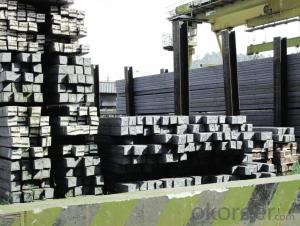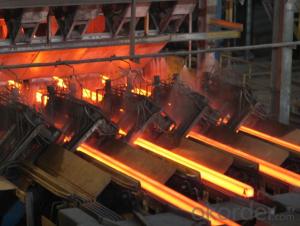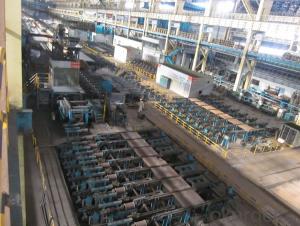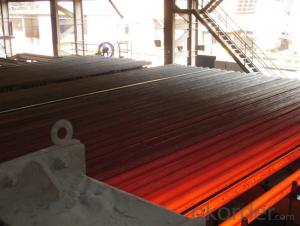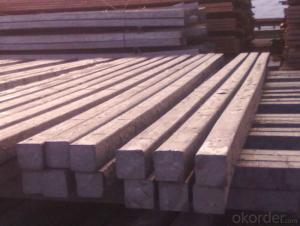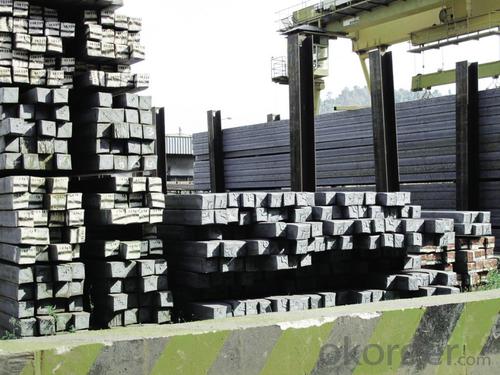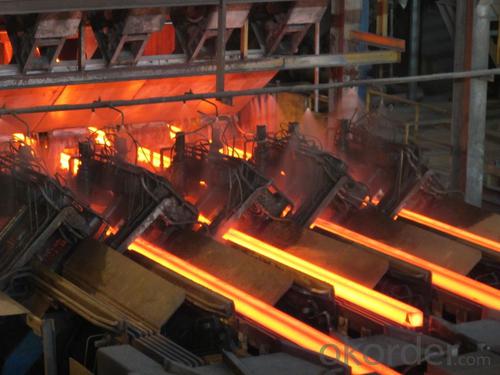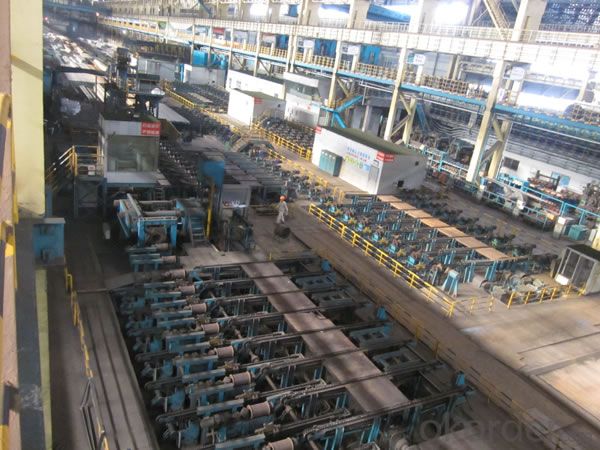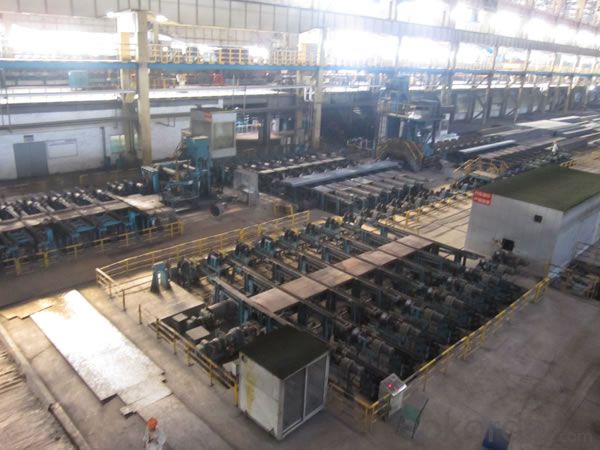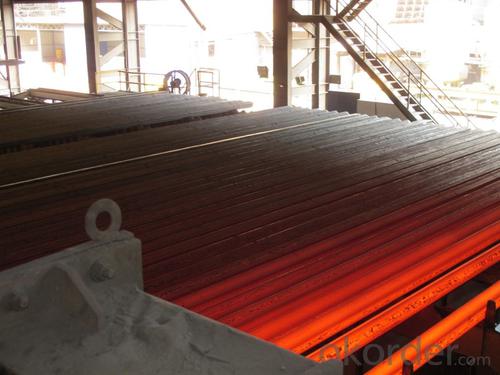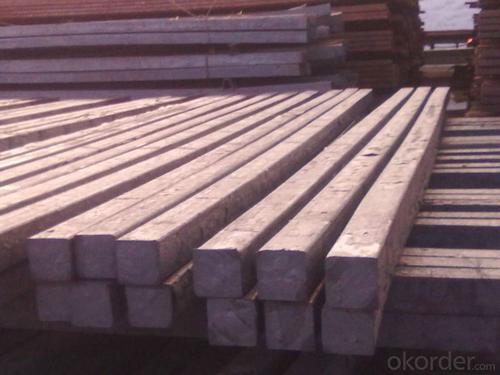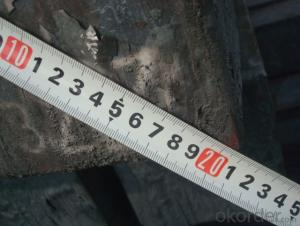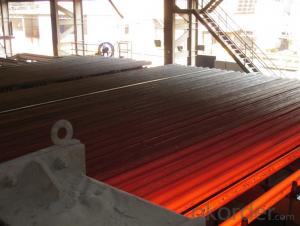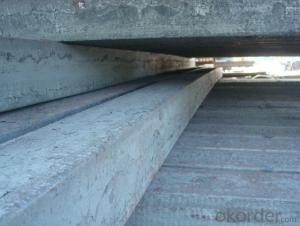Hot Rolled Steel Billet 3SP Standard 120mm
- Loading Port:
- Shanghai
- Payment Terms:
- TT OR LC
- Min Order Qty:
- 100 m.t.
- Supply Capability:
- 10000 m.t./month
OKorder Service Pledge
OKorder Financial Service
You Might Also Like
Structure of Hot Rolled Steel Billet 3SP Standard 120mm

Description of Hot Rolled Steel Billet 3SP Standard 120mm
Prepainted Rolled steel Coil is a kind of coated steel coil/sheet. With the cold rolled steel of different strength and thickness as substrate, it is produced through applying Al-Zn coat on both faces by hot dip process. In its coating, Al accounts for about 55%, Si 1.6%, while the remaining is Zn. Aluminum zinc coils enjoys both the physical protective feature and durability of Al and the electrochemical protective property of Zn. And its surface has bright silver color and regular embossed-like figure, which are highly decorative. RAL Scale Z35 Prepainted Rolled Steel Coil for Construction Roofing

Main Feature of Hot Rolled Steel Billet 3SP Standard 120mm
1.Corrosion resistance: It mainly depends on the zinc protection. When the zinc being worn,
2. Heat resistance: steel sheet has excellent heat resistance, can withstand high temperatures over 300 centigrade, and is similar with aluminized steel high temperature oxidation resistance. It often used in chimney pipes, ovens, fluorescent lighting device and the device cover.
3. Heat reflective: Galvanized steel plate heat-reflective high rate is twice as galvanized steel, often used to make insulation materials. RAL Scale Z35 Prepainted Rolled Steel Coil for Construction Roofing
Applications of Hot Rolled Steel Billet 3SP Standard 120mm
1. Construction and building: roofing; ventilating duct; handrail; partition panel;etc.
2. Electric appliance: refrigerator; washing machine; refrigerator; DVD;etc.
3.Transportation: oil tank; gas tank;road sign; etc.
4.Agriculture constructions :barn; etc.RAL Scale Z35 Prepainted Rolled Steel Coil for Construction Roofing
5.Others:vending machine; game machine; auto parts spare parts etc.
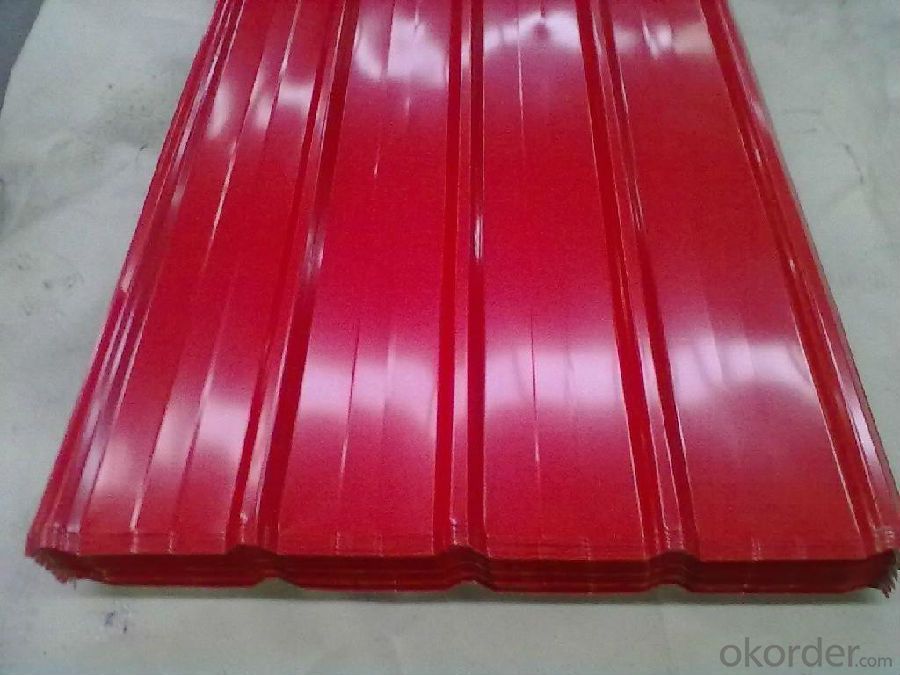
Specifications of Hot Rolled Steel Billet 3SP Standard 120mm
Product | Hot Rolled Steel Billet 3SP Standard 120mm |
Material Grade | SGCC / SGCH / DX51D+AZ, etc |
Thickness | 0.5-3.0mm |
Width | 700-1500mm |
Tolerance | Thickness: +/-0.02mm , Width:+/-2mm |
Zinc-coating | AZ30-150g/m2 |
Technique | Raw material: Hot rolled steel coil --> Cold rolled_>hot dipped galvalume |
Surface | Dried, Chromated, Unoiled,RAL Scale Z35 Prepainted Rolled Steel Coil for Construction Roofing |
Spangle | Regular spangle , small spangle, zero spangle |
ID | 508MM 610MM |
Coil weight | 25MT max |
Export package | Cardboard inner sleeves, Waterproof paper, galvanized steel covered and steel strip packed |
FAQ of Hot Rolled Steel Billet 3SP Standard 120mm
We have organized several common questions for our clients,may help you sincerely:
1. What is the minimum order quantity ?
Our MOQ is 100 mt for each size each specification. Usually we can offer discount if can buy large QTY once. RAL Scale Z35 Prepainted Rolled Steel Coil for Construction Roofing
2. How long can we receive the product after ordering?
Our general delivery time is 30 days after confirmation, but so some special orders, we have offer special delivery time
3. How to guarantee the quality of the products?
We have established the international advanced quality management system ,every link from raw material to final product we have strict quality test;We resolutely put an end to unqualified products flowing into the market. At the same time, we will provide necessary follow-up service assurance.
4. What is the payment?
We accept T/T, L/C
- Q: Can steel billets be used for making cutlery?
- Steel billets have the potential to be utilized in the creation of cutlery. These billets serve as the primary substance in the manufacturing of a variety of steel commodities, which encompass cutlery. Once heated, the billets are then transformed into desired forms, such as knives, forks, or spoons, through methods like forging or casting. The resultant steel cutlery possesses notable attributes such as strength, durability, and the ability to maintain a sharp edge. Nevertheless, it is important to recognize that the specific kind of steel employed and the manufacturing procedures substantially influence the quality and characteristics of the cutlery.
- Q: which companies are, and how the billet sales, how can we sell billet to ask for advice, thank you
- The main mold manufacturers, equipment manufacturers, military departments, measuring and cutting tools manufacturers.
- Q: What are the challenges in welding steel billets?
- There are several challenges that can arise when welding steel billets. One of the main challenges is ensuring proper heat distribution during the welding process. Steel billets are often large and thick, which can make it difficult to evenly distribute heat throughout the material. This can result in inconsistencies in the weld, leading to weak spots or even failure of the joint. Another challenge is the potential for distortion and warping of the billet during the welding process. As heat is applied to the steel, it can cause the material to expand and contract, leading to unwanted changes in shape and dimensions. This can be particularly problematic when welding large or complex structures, as maintaining the desired shape and dimensions becomes critical. Additionally, steel billets can contain impurities and contaminants that can affect the quality of the weld. These impurities, such as sulfur, phosphorus, and other elements, can lead to the formation of brittle zones or other defects in the weld. Proper cleaning and preparation of the billet surface, as well as using appropriate welding techniques and filler materials, are necessary to mitigate these challenges. Furthermore, the high carbon content often found in steel billets can make them prone to cracking during the welding process. Carbon acts as a hardening agent in steel and can increase its susceptibility to cracking, especially if proper preheating and post-weld heat treatment procedures are not followed. Controlling the cooling rate and implementing stress-relieving techniques are essential in preventing cracking and ensuring the integrity of the weld. Lastly, the sheer size and weight of steel billets can present logistical challenges during the welding process. Handling and positioning these heavy objects require specialized equipment and skilled operators to ensure safety and accuracy. Additionally, the need for precise alignment and fit-up can be more challenging with large billets, requiring careful planning and execution. In conclusion, welding steel billets poses challenges such as heat distribution, distortion and warping, impurities and contaminants, carbon-induced cracking, and logistical issues. Overcoming these challenges requires expertise, proper equipment, and adherence to appropriate welding techniques and procedures.
- Q: How do steel billets contribute to the overall recyclability of a structure?
- Steel billets contribute to the overall recyclability of a structure because they can be easily melted down and reused in the production of new steel products. This reduces the need for raw materials and energy consumption, making the structure more environmentally sustainable. Additionally, the recycling process for steel billets is cost-effective, making it a viable option for manufacturers and builders.
- Q: Can steel billets be used in the aerospace industry?
- Yes, steel billets can be used in the aerospace industry. Steel billets are a semi-finished product that can be further processed into various components and structures required for aerospace applications. Steel is known for its high strength, durability, and heat resistance, which are crucial properties for aerospace materials. Steel billets can be used to manufacture various aerospace components such as engine parts, landing gear, structural frames, and fasteners. Additionally, steel's availability and cost-effectiveness make it an attractive choice for certain aerospace applications. However, it is important to note that the specific requirements and standards of the aerospace industry must be met when using steel billets to ensure the highest level of safety and reliability.
- Q: How are steel billets used in the manufacturing of pipes and tubes?
- Steel billets are a necessary component in the production of pipes and tubes. These billets, typically rectangular or square in shape, act as the starting point for the manufacturing process. Initially, they are heated to a high temperature to increase their malleability and facilitate shaping. After heating, the billets are passed through a sequence of rollers, gradually transforming them into a cylindrical shape. This hot rolling process refines the structure and enhances the mechanical properties of the steel. Moreover, it guarantees consistent dimensions throughout the length of the billet. Subsequently, the billets undergo further processing through cold rolling and sizing operations. Cold rolling reduces thickness and enhances the surface finish, while sizing operations ensure that the final product meets the necessary specifications in terms of diameter, wall thickness, and length. Once shaped and sized, the billets are cut into specific lengths and fused together to create seamless or welded pipes and tubes. Electric resistance welding (ERW), submerged arc welding (SAW), or other welding techniques are employed to join the ends of the billets. This results in a continuous and durable joint, ensuring the integrity and strength of the pipe or tube. The last phase of the manufacturing process involves various finishing operations, including heat treatment, straightening, and inspection. Heat treatment further improves the mechanical properties of the pipe or tube, while straightening guarantees a uniform shape without any deformations. Inspection is carried out to ensure that the pipes or tubes meet the required quality standards and specifications. In conclusion, steel billets play a vital role in the production of pipes and tubes. They undergo hot and cold rolling processes, are welded together, and subjected to finishing operations to create high-quality, dependable pipes and tubes.
- Q: What are the different surface finishes available for alloy steel billets?
- Some common surface finishes available for alloy steel billets include mill finish, hot rolled, cold rolled, and polished.
- Q: What are the potential applications of steel billets in the transportation sector?
- Steel billets have a wide range of potential applications in the transportation sector due to their strength, durability, and versatility. One of the primary uses of steel billets in transportation is for the manufacturing of various vehicle components. These billets can be used to produce engine parts, suspension systems, axles, and other critical components that require high strength and resistance to wear and tear. Additionally, steel billets can be utilized in the construction of railway tracks, bridges, and tunnels. The high tensile strength of steel makes it an ideal material for these infrastructure projects, as it can withstand heavy loads and provide long-lasting performance. Steel billets can also be employed in the manufacturing of shipbuilding components, such as hulls, propellers, and deck structures, as they offer excellent corrosion resistance and structural integrity in marine environments. Furthermore, steel billets can be used in the production of various types of transportation equipment, including trailers, trucks, and buses. The strength and durability of steel make it an ideal material for constructing the chassis and frames of these vehicles, ensuring their safety and longevity. In the automotive industry, steel billets are commonly used for producing car bodies and frames. The lightweight yet robust characteristics of steel make it a preferred choice for improving fuel efficiency and crashworthiness in vehicles. Moreover, steel billets can be shaped into intricate designs, enabling manufacturers to create aesthetically pleasing and aerodynamic vehicle structures. In summary, steel billets have numerous potential applications in the transportation sector, ranging from vehicle components to infrastructure projects. Their strength, durability, and versatility make them a vital material for various transportation applications, ensuring safety, reliability, and longevity in the industry.
- Q: How are steel billets used in the manufacturing of electrical equipment?
- Various methods involve steel billets in the manufacturing of electrical equipment, particularly in the production of electrical transformers, which are vital for transferring electrical energy across different voltage levels. The core of transformers, responsible for efficient energy transfer, is manufactured using heated steel billets that are rolled into thin strips or sheets. These strips are then cut into specific shapes and sizes to create core laminations. These laminations are stacked and insulated to minimize energy losses and ensure effective power transfer. The utilization of steel billets guarantees the core's strength, durability, and magnetic properties, all of which are essential for the transformer's optimal functionality. Additionally, steel billets are used in the manufacturing of other electrical equipment, including motors and generators. In these applications, the billets are molded and machined into specific components such as rotor and stator cores, which are crucial for the generation and conversion of electrical energy. Furthermore, steel billets find application in the production of electrical enclosures and cabinets, which serve to protect sensitive equipment and wiring from external factors such as moisture, dust, and physical damage. These billets are shaped, welded, and assembled to create robust and dependable enclosures that house electrical components securely. In conclusion, steel billets play an integral role in the manufacturing process of electrical equipment. Their versatility, strength, and magnetic properties make them suitable for a wide range of applications, ensuring the efficiency, reliability, and longevity of electrical systems.
- Q: What are the different types of surface treatment defects found in steel billets?
- There are several different types of surface treatment defects that can be found in steel billets. These defects can occur during various stages of the surface treatment process and may impact the quality and performance of the steel billets. Some common types of surface treatment defects in steel billets include: 1. Scale: Scale is a type of surface defect that appears as a layer of oxide on the surface of the steel billet. It can occur due to the exposure of the steel to high temperatures during manufacturing processes such as hot rolling or heat treatment. Scale can affect the appearance and surface quality of the billet and may need to be removed before further processing. 2. Pitting: Pitting is another type of surface defect that presents as small, localized holes or depressions on the surface of the steel billet. It can occur due to corrosion or chemical reactions during the surface treatment process. Pitting can lead to reduced strength and durability of the steel billet, making it susceptible to further damage and failure. 3. Decarburization: Decarburization is a surface treatment defect that involves the loss of carbon from the surface layer of the steel billet. It can occur due to exposure to high temperatures or chemical reactions during manufacturing processes. Decarburization can result in reduced hardness and strength of the billet, affecting its overall performance and suitability for certain applications. 4. Staining: Staining is a surface defect that involves the discoloration or blemishes on the surface of the steel billet. It can occur due to the presence of foreign substances, such as rust or contaminants, during the surface treatment process. Staining can affect the appearance and aesthetics of the billet, but it may not necessarily impact its mechanical properties. 5. Scratches and Abrasions: Scratches and abrasions are physical surface defects that can occur during handling, transportation, or processing of the steel billet. They appear as visible marks or grooves on the surface and can affect the overall quality and appearance of the billet. While scratches and abrasions may not significantly impact the mechanical properties of the billet, they can compromise its surface integrity and may require further treatment or repair. It is important to identify and address these surface treatment defects in steel billets to ensure the desired quality and performance of the final product. Proper inspection, monitoring, and control measures during the surface treatment process can help minimize or eliminate these defects, resulting in superior steel billets.
Send your message to us
Hot Rolled Steel Billet 3SP Standard 120mm
- Loading Port:
- Shanghai
- Payment Terms:
- TT OR LC
- Min Order Qty:
- 100 m.t.
- Supply Capability:
- 10000 m.t./month
OKorder Service Pledge
OKorder Financial Service
Similar products
Hot products
Hot Searches
Related keywords
